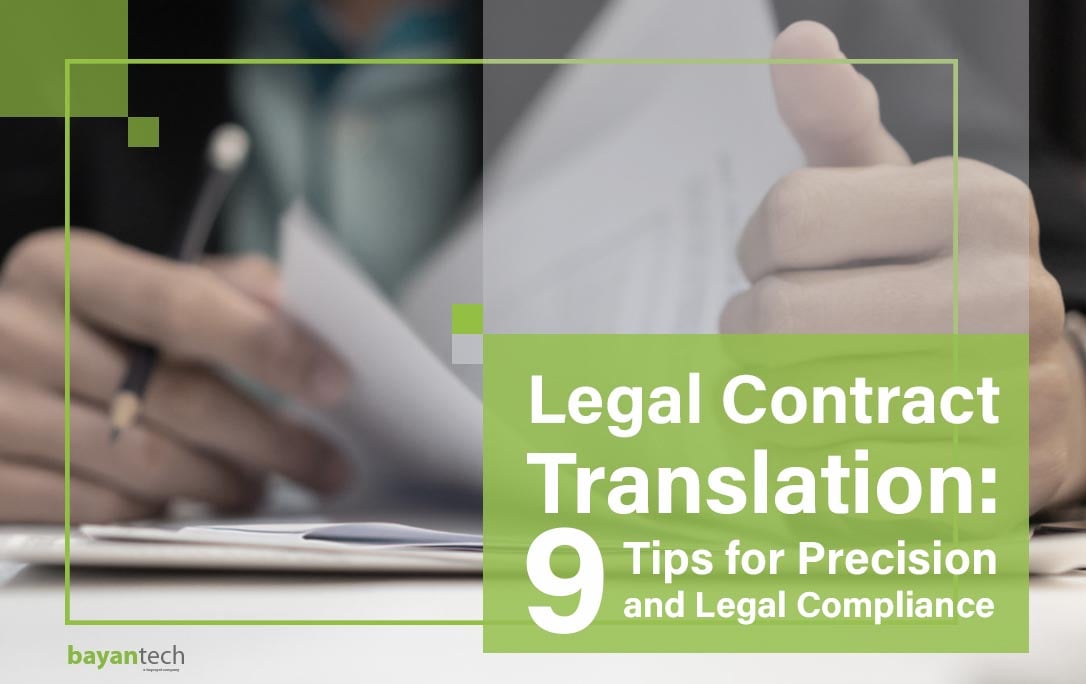The field of legal translation services is diverse, serving a variety of needs from a variety of sectors. Whether you’re doing business internationally or planning to marry abroad, translating your documentation in an accurate and timely fashion will be a necessity. And mistakes could result in a delayed legal process, a lost opportunity, or even a liability.
Legal translation covers an enormous diversity of formats and cases. In this post, we’ll focus on professional contract translations, how contracts are translated, and the types of contracts that are commonly subjected to translation (a key read if you’re a linguist in training). We’ll also share some common legal contract translation challenges and 9 tips to overcome them.
Let’s get started.
What Is Legal Contract Translation?
Contracts are legally binding documents that outline the terms of an agreement between two parties. As its name indicates, legal contract translation (also known as legal agreement translation) is about rendering a contract from one language to another. Legal contract translation is a specific service within the larger discipline of legal document translation.
This process is most commonly carried out by a specialized legal translator. And, in professional legal translation companies, it’s often in the hands of specialized native speakers.
Legal contract translations are a must in the context of international negotiations, be it between people or companies. And, in some places, this necessity isn’t just a common-sense move, but legally required.
For instance, California laws establish that businesses negotiating consumer contracts in a language that’s not English should provide the customer with a translated copy.
Due to the many details that go into each official document, and because legal systems differ in every part of the world, experienced legal translators must not only be familiar with the legal sector but most importantly, the target region’s legal terminology and specific laws.
Some of the most common types of agreements that require translation through a legal contract translation service are:
Purchase Contracts: These documents outline the purchase price and basic information related to the transfer of real estate titles.

Sales Contracts: These documents establish the terms between a buyer that wants to purchase goods and the seller of said goods.
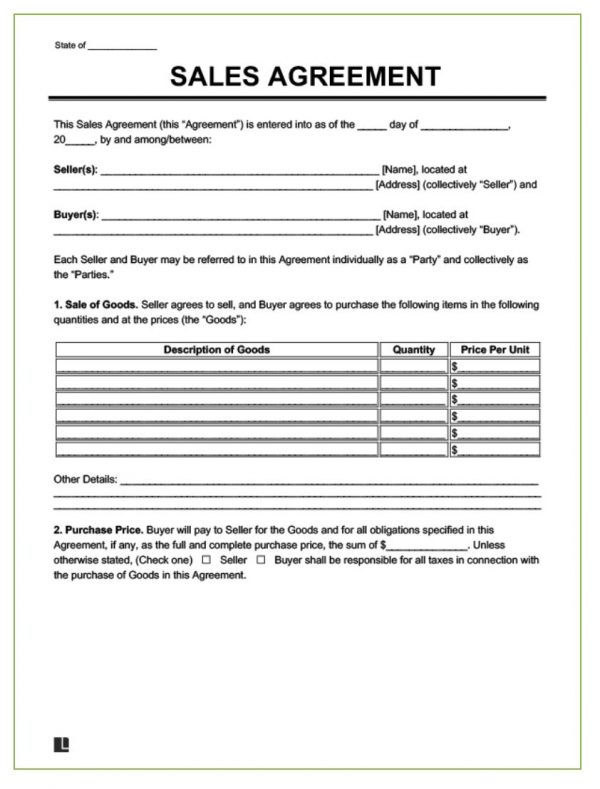
License Contracts: In these contracts, a licensor gives the licensee permission to produce and sell goods, use a brand name or trademark, or use patented technology owned by the licensor.
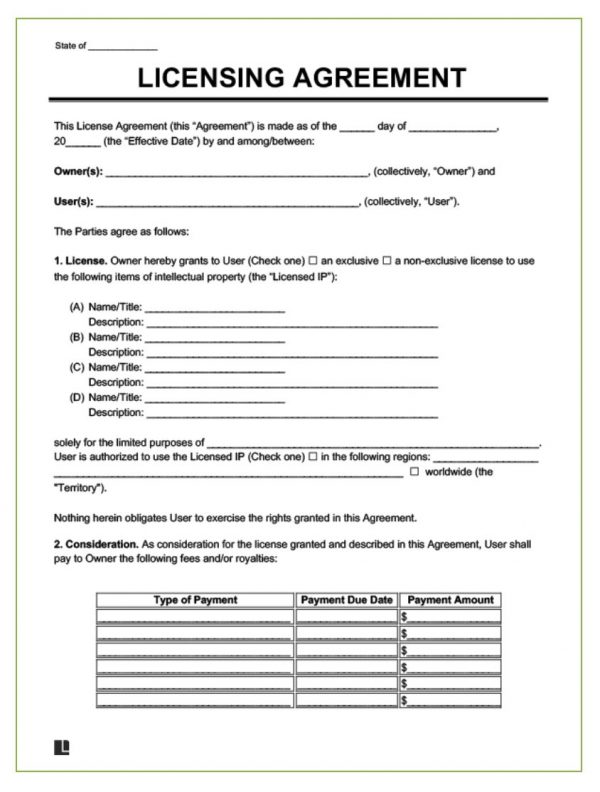
Commercial Lease Agreements: These contracts are used for renting business property such as office buildings, warehouse or industrial space, etcetera.
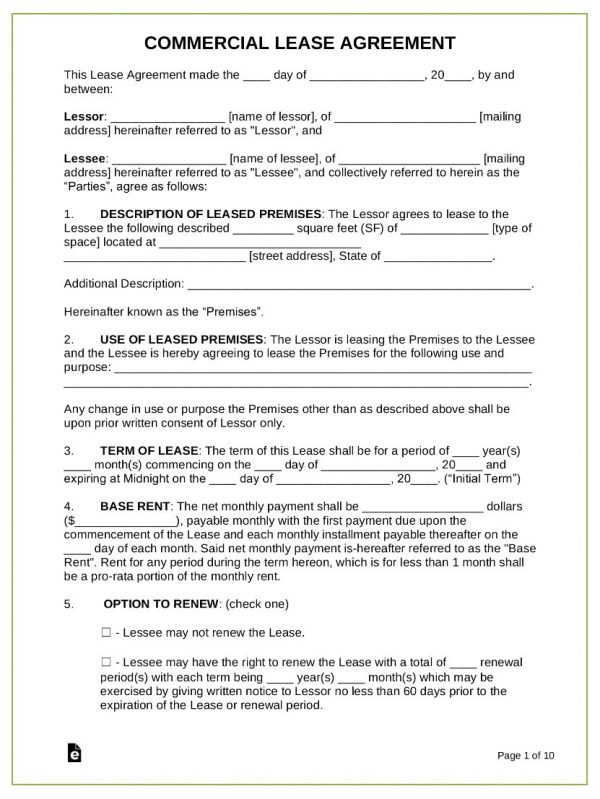
Contracts of Carriage: These agreements establish the terms for a business partnership involving a carrier and a shipper transporting goods.
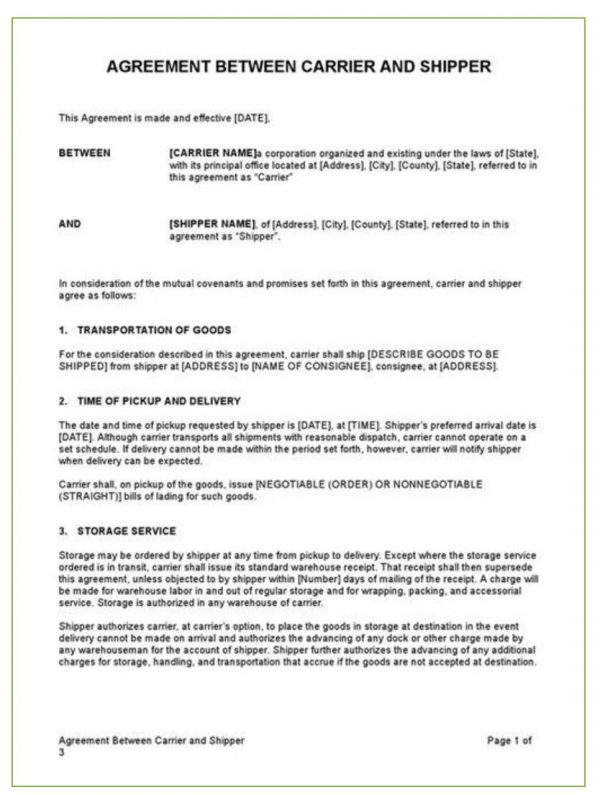
Employment Contracts: These agreements cover the terms of a working relationship between an individual employee and an employer, or labor union.
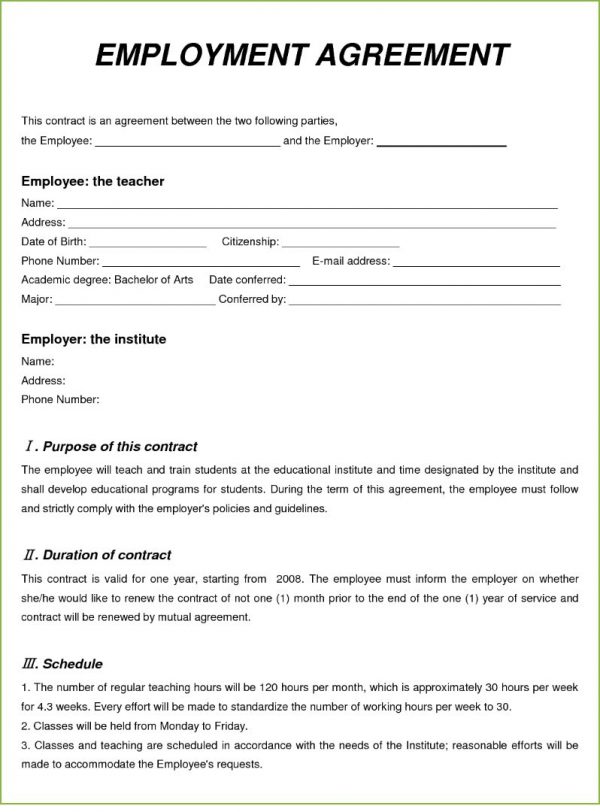
Construction Contracts: These contracts are legally binding agreements between the owner and the builder that imply a certain compensation for a specific job.

Lease or Rental Agreements: These agreements take part between a landlord that leases property and a tenant that will pay rent for its use.

Non-disclosure Agreements: These legal agreements prohibit a party from sharing confidential information with outsiders.

All legal documents consist of “standard” language that gives it a format, known as formulaic language, and other parts that must be interpreted literally, and that are specific to the case at hand. In this case, that’s contract information.
Contract information includes all the details about a deal, from who signs it to the consequence of failing to fulfill it. The slightest change could lead to changing the meaning of the agreement, which could result in terrible legal consequences.
Legal Contract Translation Cheat Sheet
Our legal contract translation cheat sheet includes everything you need to know about this discipline, presented in a concise and actionable way.
What Makes a Good Legal Contract Translation?
Translating legal contracts comes with three basic challenges:
- Accuracy
- Legal terminology handling
- Formatting
The goal of legal contract translation is to make sure both parties fully understand the terms that the document establishes. A translation that obscures the meaning of key sentences or substitutes legal terms for less precise alternatives can give one of the signing parties an erred understanding of the agreement. This can prevent this party from fulfilling their side of the contract and/or make the opposite party subject to legal repercussions.
Formatting is also an important part of legal contract translation, especially when dealing with translating across writing systems. In this type of case, legal translation services providers that also offer desktop publishing should be your top choice.
Sign up to our newsletter to receive the latest blogs and news.
Other Major Law Translation Challenges
Aside from the aforementioned obstacles, depending on the languages and countries of origin of the parties involved, legal contract translation may pose the following challenges:
Let’s take a closer look.
Different Countries, Different Legal Systems
One of the most common challenges in legal contract translation is how diverse legal systems apply different languages, resulting in no local equivalent for some terms and concepts.
Changing Legal Systems
Legal translators ought to be up-to-date with the latest developments of the legal systems at hand. Not knowing if a law changed, or if it’s still valid, can produce costly inaccuracies.
Little Room for Flexibility
The legal field is filled with rigid discipline-specific terminology that sometimes not even native speakers understand. And even a slight change in wording can imply a big change in what the contract means. This is why law translation can be one of the least flexible fields to work in.
The Quirks of Legal Prose
Most legal documents feature what is commonly called “wooden language”. This language is characterized by extensive use of the passive voice, sentences that may seem endless, and the overuse of commas, semicolons, and apostrophes. So it can be easy to add a period in the wrong place or ruin an entire sentence by simply missing a punctuation mark.
Strict Deadlines
Legal contracts are commonly linked to circumstances involving court proceedings and corporate strategy. A delayed language translation or mistranslation may have extreme consequences for the professional translator, clients, and the client’s business partners. This could either lead to delaying a legal process, preventing the client from taking a once-in-a-lifetime opportunity, or leaving the client legally liable.
Can You DIY Legal Contract Translation?
You may be wondering if, as an involved party (or even, as a legal practitioner), you should be able to translate the contract yourself. The simplest answer to this question is that it’s not recommended.
If you’re a signing party, even if you’re bilingual, you may have an unconscious bias that leads you to bend the translation to benefit your interests. And, if you’re credibly accused of doing this, you may be legally liable.
On the other hand, as a bilingual legal professional, you may not have the technical knowledge of language that translators have. Therefore, you’re likely to lack the problem-solving skills of a translator, thus obscuring the text in an attempt to bridge cultural gaps.
Can Legal Contract Translation Be Automated?
On the other hand, it’s worth asking if legal contract translation can be automated. The “wooden language” of legal documents and their surgically precise terminology handling make a good argument for automation. And, in fact, most legal services providers automate repetitive processes.
But legal translations can’t be automated from beginning to end, because machine translation tools often fail to recognize the context and syntax of a sentence, which added up to the difficulties of common legal language can render a text absolutely illegible – and thus, make your contract unsignable.
On the other hand, formatting issues won’t be solved (and, in fact, they may be caused) by machine translation.
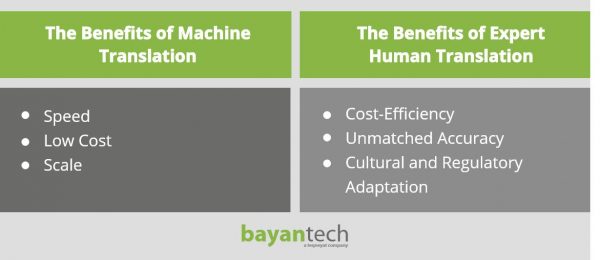
9 Legal Contract Translation Tips for Precision and Compliance
Legal contract translation can be confusing and stressful. From dealing with legal terminologies to guaranteeing that the text doesn’t lose its meaning. But don’t worry, if you’re learning how to translate legal documents, here are some useful tips that will help you take your skills to the next level.
1- Have an Attentive First Read
Giving a first read to the document as a whole will help you understand how and where to apply your problem-solving techniques.
Understanding the purpose of the translation and paying attention to the tone of voice, the grammar, and connotation, is of vital importance. But there are also specific rules, laws, and terminology that you might have to take into account before even starting with your legal contract translation.
2- Do Your Research
Sometimes you will have to translate the laws from your own country, which you might be familiar with, especially in terminology and rules. But on some occasions, you will have to work with legal systems you may not be familiar with, and that’s when you have to do your research.
For this purpose, as a legal translator, it’s vital that you keep an updated library of reliable legal resources.
3- Follow the Original Structure
Even in the cases in which desktop publishing is necessary, during the translation stage, make sure you don’t affect the structure of the original document.
Changes in structure may lead to changes in connotation, and thus make the work of desktop publishers even harder.
4- Pay Particular Attention to Terminology
Terminology management is one of the most problematic areas of legal contract translation. As we explained previously, legalese can be anywhere from tricky to translate to untranslatable.
When discussing deadlines for a project (however strict), make sure you have enough time to analyze and investigate your word choices.
5- Use a Translation Memory
Don’t neglect your glossaries and translation memories, as they can really save you a lot of time and work. Keep these tools updated and use them.
You’ll find your process even more dynamic if you use a translation management system that allows you to automate repetitive translations through your translation memory. And, with all that extra time, you will be able to focus on legalese, grammar, and other non-automatable parts of the work.
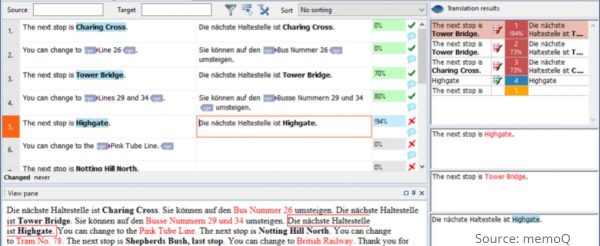
6- Speed it Up With Contract Models
Contract formats may change across countries. But, as you provide translation services in your language pair, you’ll come to recognize some patterns. Use your previously translated contracts as a guide to speed up your translation process.
Reusing your old material isn’t uncommon in the legal sector. The formatting of legal documents is often so delicate that even lawyers will use their previous contracts as layouts to make sure everything is in the right place every time.
7- Beware of Doublets
English legal doublets are stock phrases consisting of two words with extremely similar meaning. For instance, “law and order”, “due and payable” or “cease and desist”. These phrases reflect a historical transition in terminology. And some theorized that they remained as a part of legal speech due to legal clerks being paid per word.
Unnecessary repetition can lead to redundancy and in some cases, against all odds, it can make a sentence more ambiguous, while also increasing the cost of the translation. So, be extremely careful in your handling of doublets (and triplets), replacing them with relevant local terminology.
8- Use Proper Tenses
When translating contracts, implementing proper tenses will help everyone reading the documents to understand the meaning behind each statement. When translating parts of the contract that deal with promissory statements, use the future tense to indicate the parties will fulfill mentioned promises in the future. On the other hand, if you are translating sections that discuss policy, using the present or past tense is the best choice.

9- Look for Professional Advice
Last but not least, if you think you can’t handle it all by yourself, seek advice from a trusted source in the relevant location. Someone who’s a professional in the legal field has a deep understanding of subject-matter terms and will be able to provide you with the necessary insight to deliver a high-quality translation.
Work with Legal Contract Translation Experts
When signing legal agreements internationally, hiring an expert translation company that will provide you with professional contract translations should be a top priority. It will guarantee a precise document and minimize the stress of conducting business internationally.
At bayantech, we help companies and law firms to surpass law translation challenges through a combination of legal expertise and strategic automation.
We embark on every project with a specialized project manager, the latest translation tools, and an ISO-certified commitment to delivering the best and most accurate translations.

